The fur and skin of your dog have a functional as well as aesthetic purpose. They help keep harmful bacteria and germs out while also preventing your dog from losing vital fluids and heat. Your dog’s skin and coat will thank you for your careful attention to what goes into their food bowl if you want to keep them in tiptop shape.
Vitamins that needed for better skin and coat of a dog
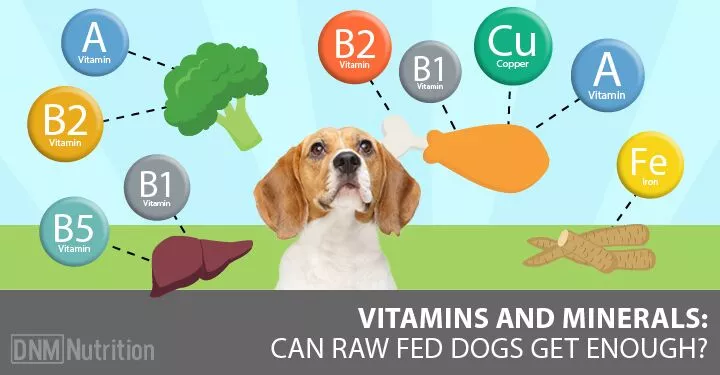
Your dog’s skin and coat are affected by his or her diet, especially protein, fat, vitamins, and minerals. The protein in your dog’s food makes up practically all of his coat. Lack of sufficient quality protein in your dog’s diet may cause hair loss or dry, thin, brittle hair.
Skin cells are also flat and tightly packed, with protein and fatty acid membranes to protect them. When these nutrients are lacking, cell walls become permeable, making it easier for harmful microorganisms like bacteria and viruses to enter the body.
Essential Nutrients for Your Dog’s Coat and Skin
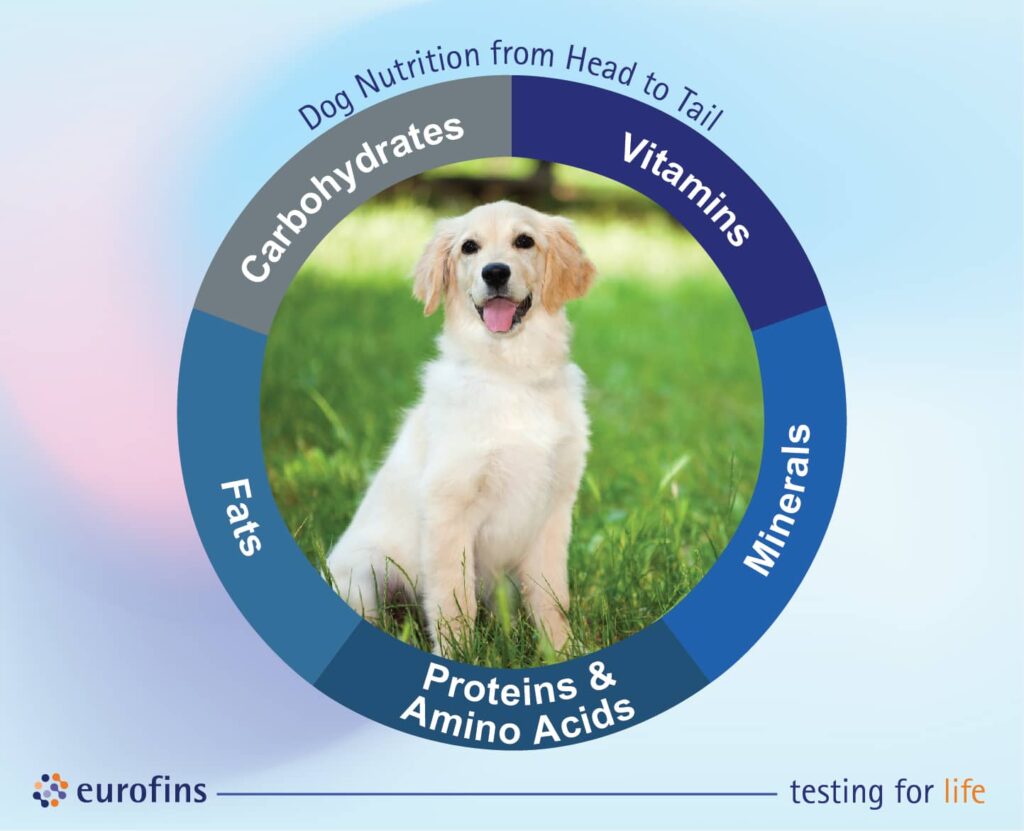
- Critical Amino Acids
Proteins can be obtained from both animal products and plant foods. However, plant-based proteins may not include enough of some necessary amino acids, while animal-based proteins contain all of the essential amino acids a dog needs.
- Fats and Oils
Fatty acids, which are absorbed into skin cells, can be found in both animal and plant-based substances. Particularly beneficial for canine skin and coat is the fatty acid linoleic. A lack of linoleic acid can lead to hair loss, oily skin, and inflammation in dogs.
Chicken fat and vegetable oils like corn and soybean oils are good sources of linoleic acid. Fatty acids in vitamin-rich fish oils have been shown to benefit skin and coat health, according to studies conducted by IAMSTM.
- Minerals and Vitamins
Vitamins and minerals are essential for your dog’s skin and coat. Complete and balanced diets rich in vital vitamins and minerals are preferable to supplementation to provide these nutrients.
Foods that needed for better skin and coat of a dog
The condition of your dog’s skin and hair is not entirely dependent on environmental variables. What you’re feeding him also plays a significant role. The following foods, from chia seeds to sweet potatoes, will help your dog’s skin and coat glow from the inside out.
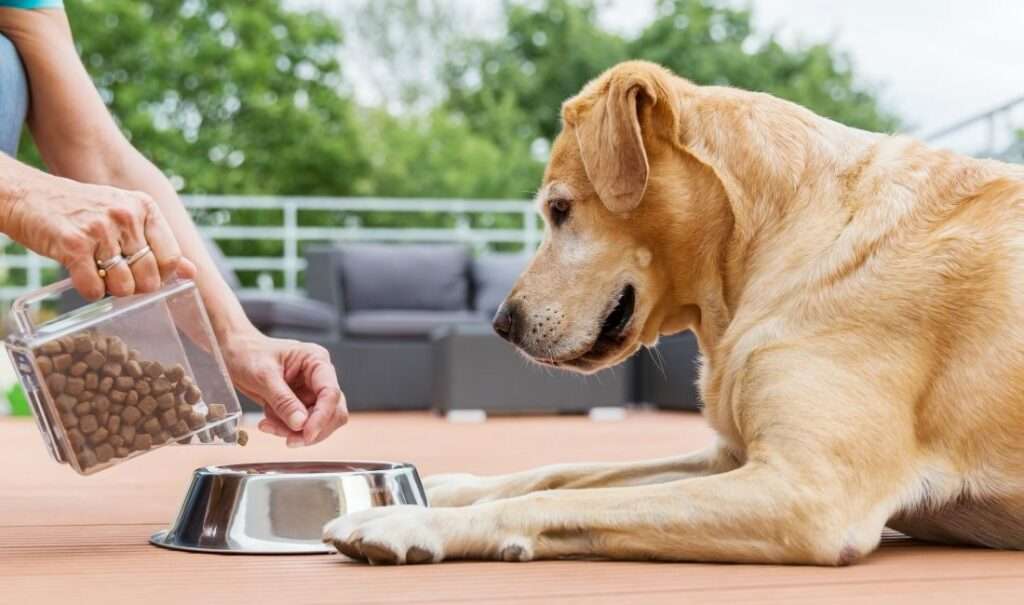
1. Chia
Chia seeds are high in antioxidants and include significant amounts of B vitamins, calcium, copper, iron, magnesium, phosphorus, potassium, protein, and zinc. Alpha-linolenic acid (ALA), an Omega 3-rich plant fatty acid, is abundant in certain foods. They don’t contain gluten. The high Omega 3 content in chia seeds makes them effective in the fight against chronic skin inflammation.
2. Eggs
Eggs have the highest concentration of bioavailable protein of any food. They are the equivalent of a magic bullet for healthy skin and hair. Many people claim that eggs are the best food for hair since they help to maintain its shine and strength. Eggs’ lutein content aids in tissue healing and also keeps skin supple and moisturized. Eggs’ zinc content is beneficial to both skin and hair. Hair loss, skin irritation, lesions, and fungus can all be the result of a biotin shortage, so it’s important to get enough of this B vitamin (also called vitamin H or vitamin B7), which can be found in egg yolks. Biotin/vitamin H is useful in the treatment of allergic responses and skin disorders. Vitamin A, found in eggs, is essential for maintaining healthy skin and a glossy coat, as well as repairing any damage to cells that may have occurred.
3. Almonds
One of the secrets to beautiful hair and skin is alpha-tocopherol, which is found in almonds together with the rest of the vitamin E family (tocopherols and tocotrienols). Furthermore, almonds provide some Omega 3 fatty acids and are rich in B vitamins, copper, manganese, magnesium, zinc, and bioflavonoids. Because of their high-fat content, almonds should be stored in a cool, dark area away from direct sunlight; they will keep for a few months in the fridge and up to a year in the freezer.
4. Coconut
Organic, unsweetened coconut is fantastic for making treats and sprinkling on your dog’s meals. Additionally, you should try coconut chips. Medium-chain saturated fats, like those found in coconut, are metabolized into energy and have unique qualities that make them effective anti-inflammatory agents, reducing bacterial growth, irritation, and inflammation. The Bastyr University of Natural Sciences in Washington State claims that consuming raw coconut helps alleviate the symptoms of bacterial and inflammatory skin disorders.
5. Carob
Carob is full of essential nutrients and vitamins, including calcium, phosphorus, iron, potassium, magnesium, silica, vitamins A, B1, B2, niacin, and protein, in addition to its high concentration of natural sugars. Carob is widely regarded as the ultimate “survival food” due to its extended shelf life, lack of perishability, and convenience in storing. It is safe for dogs because it lacks the caffeine and theobromine found in chocolate. Vitamin E in it helps keep skin healthy and it also fights germs and viruses.
6. Oats
Oats are a fortifying breakfast staple. They have a low starch level and a high mineral content, particularly potassium and phosphorus. Additionally, oats are a good source of iron, magnesium, B vitamins, and calcium. They improve your dog’s digestive system and aid in toxin elimination, which is a critical factor in maintaining good skin and hair.
7. Liver
Grass-fed liver packs a potent punch for better skin health. Calcium, phosphorus, magnesium, potassium, iron, zinc, copper, vitamins A, B6, B12, C, D, and E, thiamin, riboflavin, niacin, pantothenic acid, folic acid, and biotin are just some of the nutrients that are included. Chicken livers are a tasty way to get more Omega 3 and 6 fatty acids into your diet.
8. Unfarmed salmon
One of the best places to get Omega 3s is through cooked wild salmon, not raw. Plus, it’s a good source of selenium. Research into the amino acid and protein composition of wild salmon has uncovered promising evidence for the health advantages of bioactive peptides, specifical calcitonin. Synthesized by the thyroid gland, the human version of calcitonin maintains healthy collagen and mineral composition of bone and its surrounding tissue.
9. Cranberries
Cranberries have a long history of usage in traditional medicine and have been studied for their potential to cure everything from rheumatoid arthritis and scurvy to skin sores and dermatitis. Proanthocyanidins, anthocyanins, and ellagic acid are only some of the antioxidants found in cranberries.
10. Sweet potatoes
Sweet potatoes are often regarded as a skin-friendly superfood. They are rich in vitamin E and beta-carotene and also provide a good dose of vitamin A. Sweet potatoes are a good source of nutrients like calcium, iron, folate, potassium, copper, and thiamine. Vitamin C in sweet potatoes speeds up the healing process and helps the body make more collagen.
Care that needed for better skin and coat of a dog
If your dog’s coat health isn’t being negatively affected by any underlying conditions, you have a lot of options.
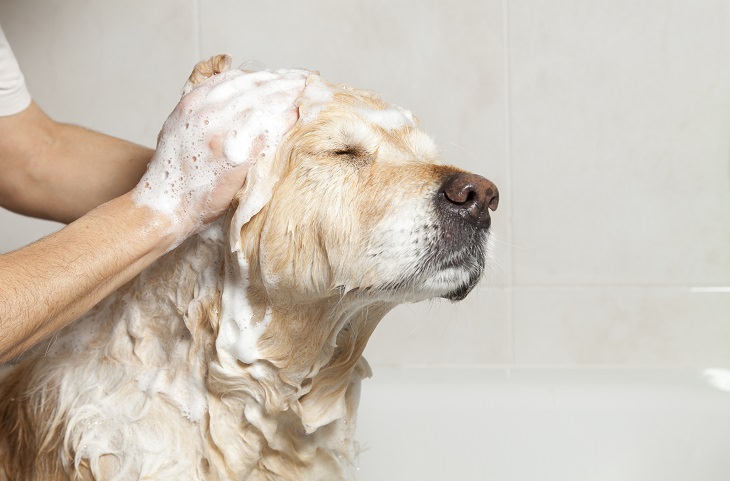
- Adequate Nutrition
As we’ve discussed before, Omegas are crucial to maintaining healthy hair and skin. However, do you have any idea how to increase your dog’s appetite for it?
You should seek out a dog food that is rich in the healthful fats omega-3 fatty acids, omega-6 fatty acids, and omega-9 fatty acids.
Alternately, you can eat a variety of high-Omega foods, such as eggs, vegetable oil, and salmon.
Talk to your vet about the ideal amount of healthy fat for your dog’s breed, age, and activity level.
- Drink plenty of water
The condition of your dog’s coat is just one of many factors that can be positively affected by providing him with a regular supply of fresh water.
It’s especially crucial if your dog lives on a diet of dry food because it won’t be getting enough moisture otherwise.
Maintain a constant supply of clean water for your dog.
Whether you’re going to be out for a while and you’re not sure if there will be a place to get your dog some water, bring a collapsible dish and an extra water bottle.
- Brushing Teeth Three Times a Week
Brushing your dog’s fur in between grooming sessions helps distribute the oils from their skin and coat, making it more pliable and reducing the risk of dry skin and fur.
In addition to preventing matting, it improves the health of your fur by removing excess fur and allowing fresh air and blood to reach your hair follicles.
In addition, it’s a terrific chance to spend some extra time with your dog regularly.
- Find the Proper Shampoo
Whether you wash your dog at home or take him to the groomer, you should always ask what kind of ingredients are included in the shampoo.
Coat and skin dryness, age, and other factors all play a role in creating a wide spectrum of appearances.
Look for a natural shampoo that has vitamins, minerals, and proteins to bring out your hair’s natural shine.
Your veterinarian will be able to recommend a good shampoo if you are hesitant.
Even if “twinning” with your pet is all the rage, human shampoo should never be used on canines. It may aggravate their existing skin and coat problems by irritating their skin.
Diseases and parasites that can harm on dog’s coating
Unlike internal parasites, which can spread disease throughout a dog’s body, external parasites only affect the dog’s outside. The American Veterinary Medical Association (AVMA) reports that many pets suffer from itchy skin and irritated ears due to external parasites like fleas, ticks, and mites at some time in their life. Having these parasites on your body might lead to skin issues or even disease. Many external parasites can now be treated, controlled, and prevented with ease because of advances in modern medicine.
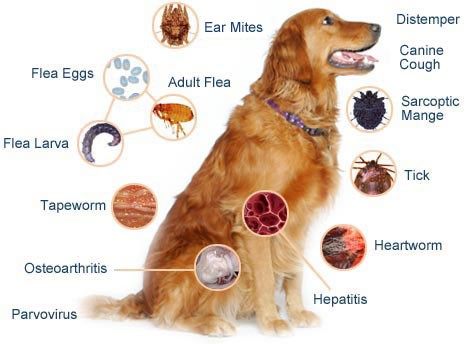
- Fleas
Small, winged insects known as fleas prey on animals such as dogs. They flourish in humid, warm climates and, depending on where you live, maybe migratory or permanent residents. Some dogs become so distressed by fleas that they lick, chew, and scratch at their skin until it bleeds. Young dogs may develop an anemic if they are exposed to fleas. Dogs can also contract tapeworm infection from eating infected fleas.
Fleas can be seen moving around on your dog’s skin, and they are dark in color. The rump and the back of the head are two of their favorite locations. Do a thorough search of areas with little hair, such as the groin. To confirm a flea infestation, you can also check for tiny black dots, about the size of poppy seeds, in the fur. These tiny particles are flea poop, made up of bits of digested blood. Just put some soil on a damp piece of white tissue if you’re not sure if it’s “flea dirt” or regular dirt. After a minute or so, the flea poop will have a small red patch or halo around it as the blood rehydrates and diffuses into the tissue, confirming that it is flea poop.
- Ticks
Several dangerous diseases, such as Lyme disease, Ehrlichiosis, and Rocky Mountain spotted fever, are transmitted by ticks to dogs. Ticks, of which there are more than 800 species, are obligate bloodsuckers that prey on mammals, birds, and reptiles. The four stages of a tick’s life cycle might take up to three years. A hatchling’s only chance for survival is a steady diet of blood.
- Nits and Lice
Itching, hair loss, and infection are all symptoms of skin infestation, and both lice and mites are tiny parasites that feed on your dog’s skin. Although they are of distinct species, lice and mites are remarkably similar in their habits and performance.
Tick and flea insecticides are effective against lice since they both dwell in a dog’s hair. It’s important to remember that canine and human lice are very different species. Some people may feel the itchy bite of a canine louse, but they will not get an infestation.
Otodectes, often known as ear mites, are a common problem in puppies. If your dog frequently scratches his ears and shakes his head, he may have mites. Furthermore, a heavy brown discharge is possible. Over time, persistent scratching can cause open wounds or even ruptured blood vessels. A dog’s ear mites can jump to another dog’s ear if they are nearby. Ear drops and maybe an ear cleaning are what your vet will use to treat your dog.
Scabies, also known as sarcoptic mange, is an extremely contagious skin condition that can spread from human to canine and back. Extreme itching is caused by tiny mites that burrow into the skin of the dog. Affected areas for scabies include the ears, elbows, legs, and face. Symptoms include balding, rashes, and scabs. Medication to kill the mites, reduce itching, and repair the skin can be obtained from a veterinarian. Furthermore, it is essential to clean the dog’s bedding and surrounding area thoroughly.
Walking dandruff, which is caused by Cheyletiella mites, appears on the dog’s head, back, and neck. Itchy red spots are caused by this mite on humans, too. Treatment includes frequent medicinal baths, the shortening of long hair, and the use of topical pesticides.


